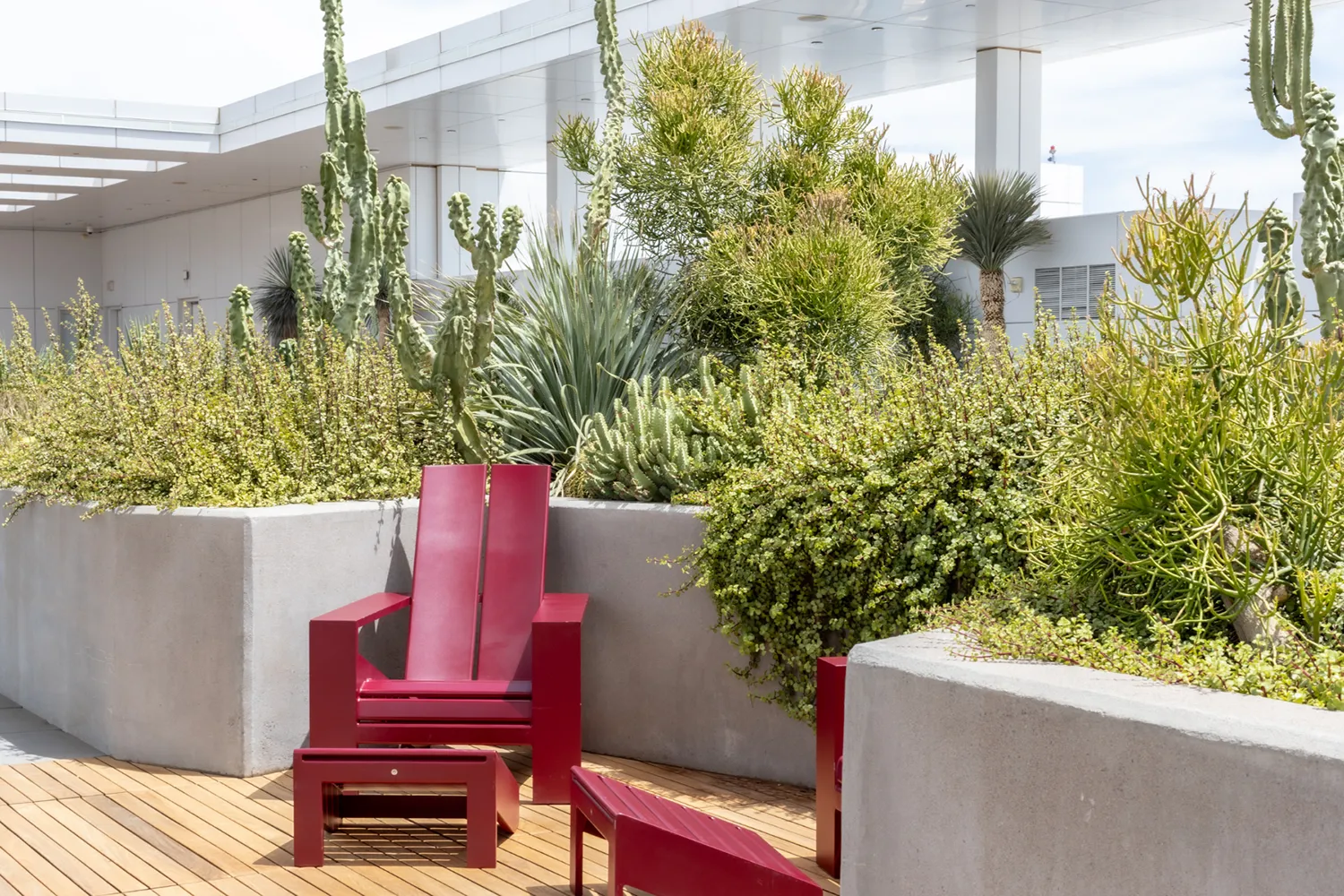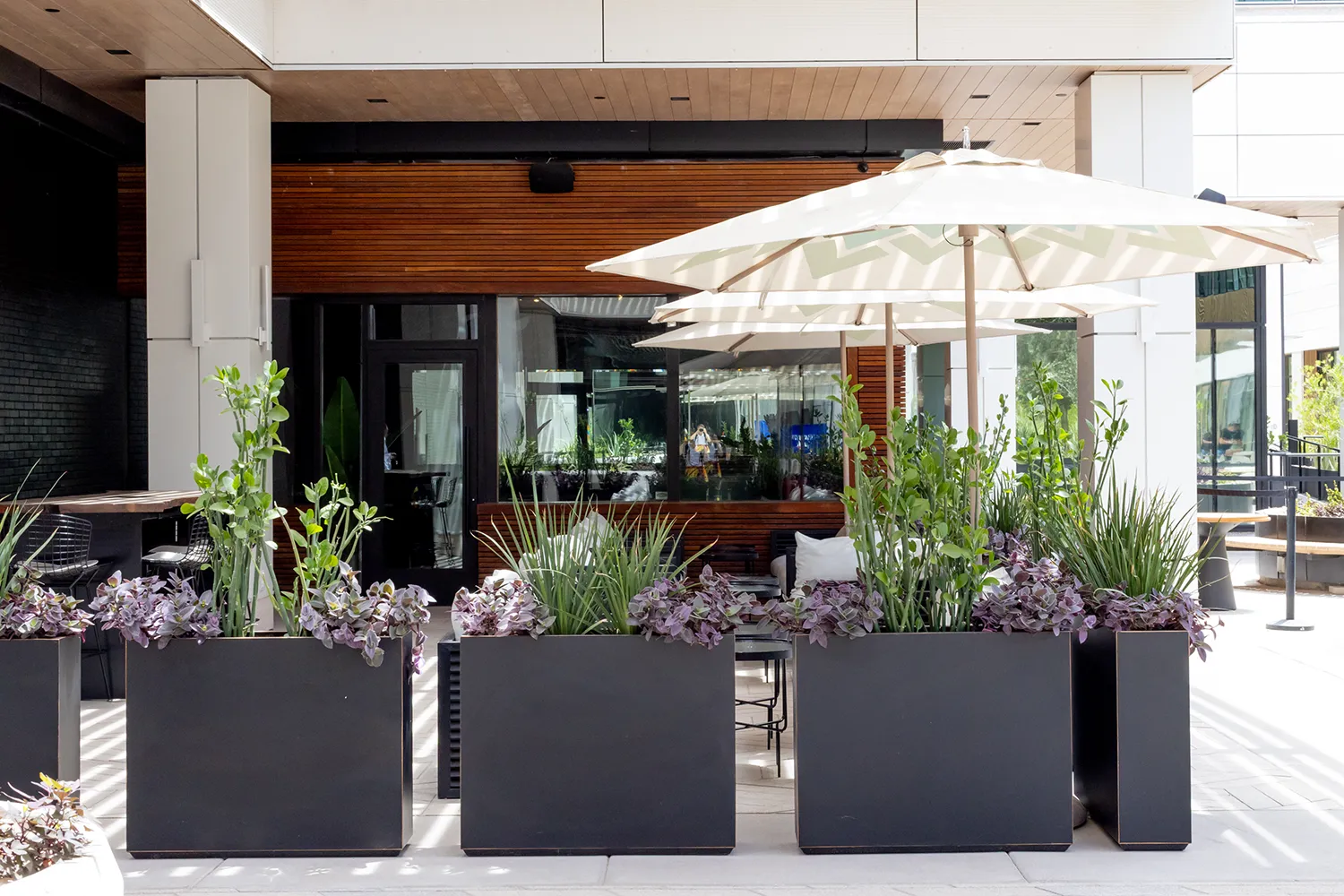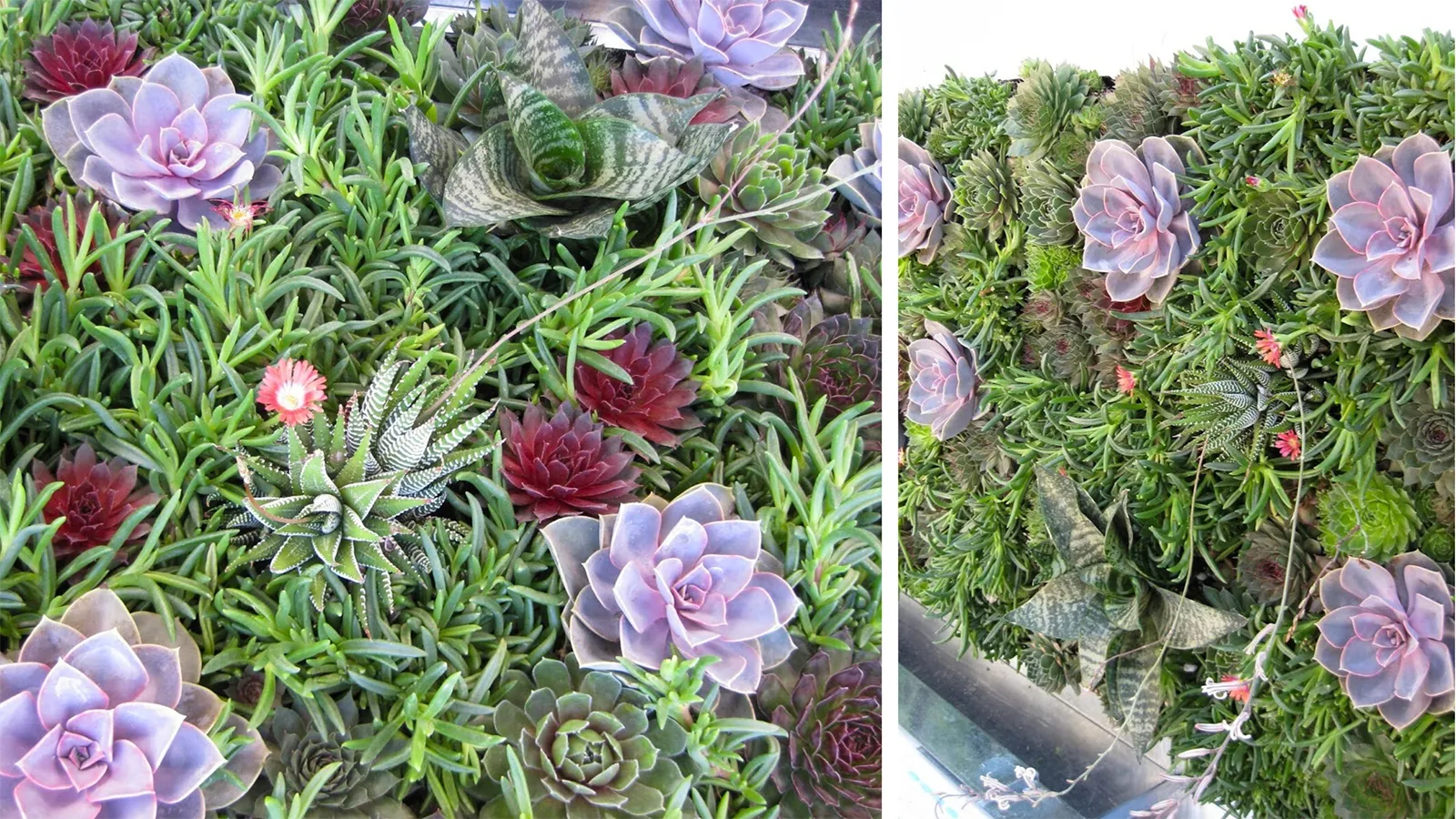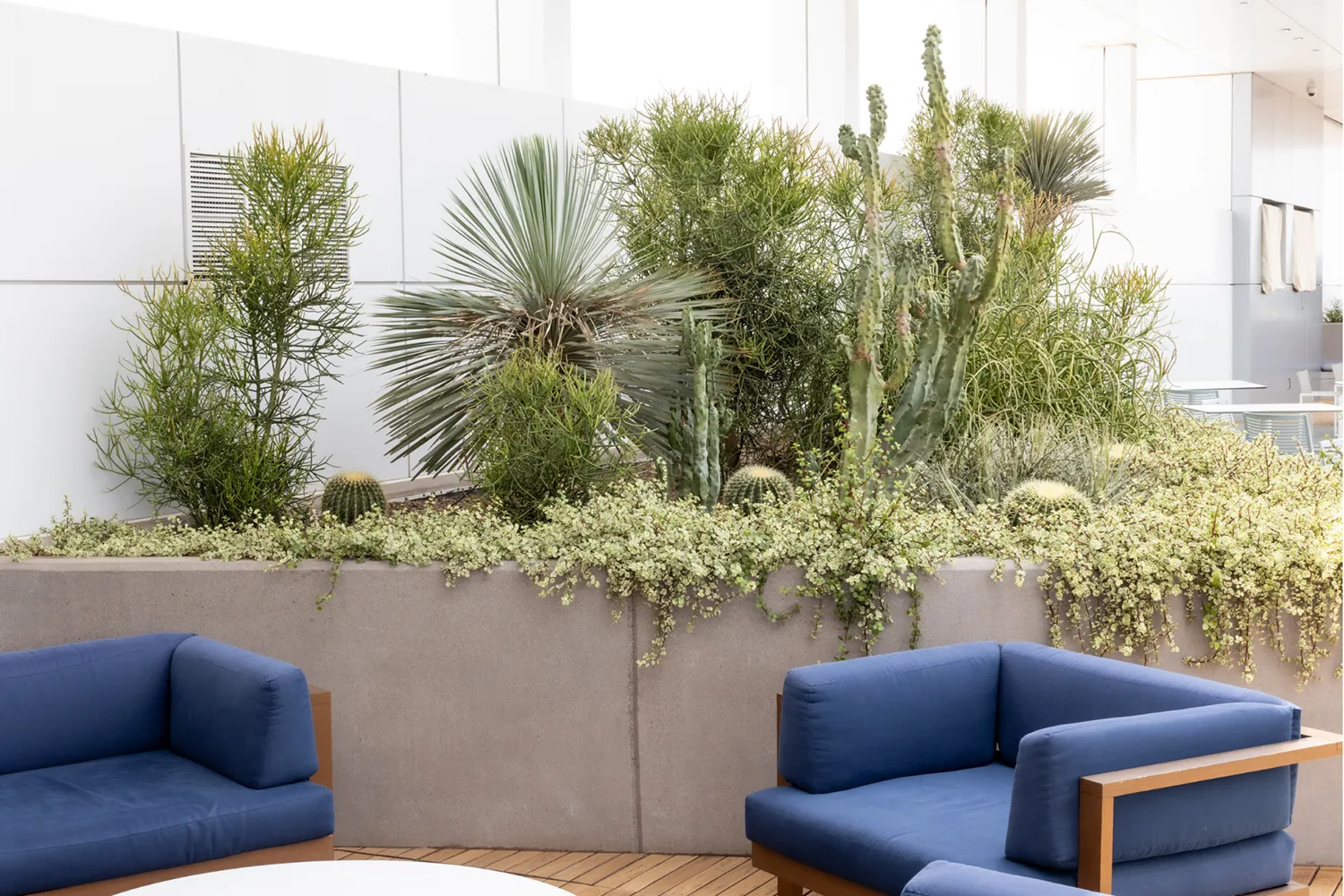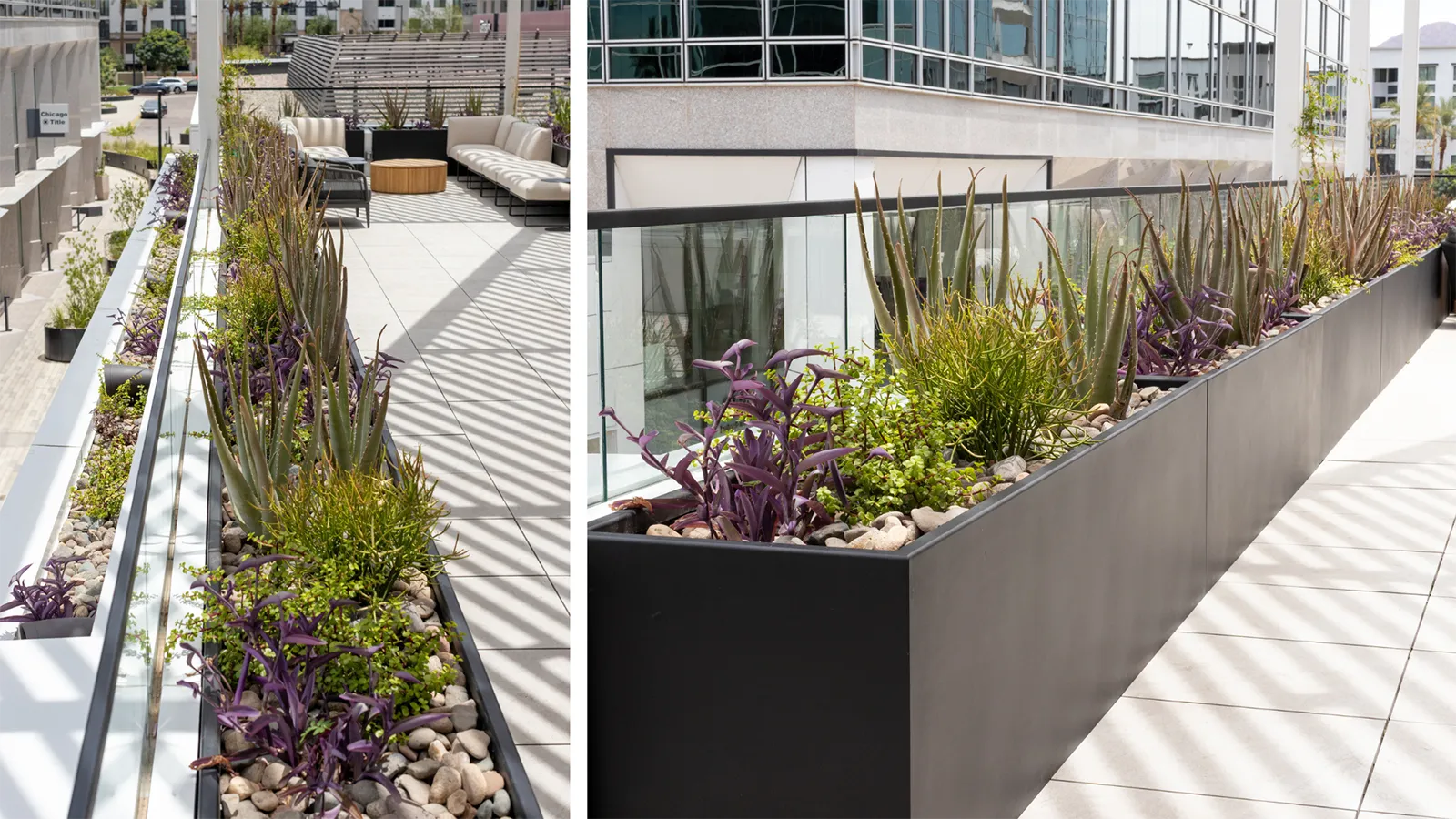Succulents have captivated enthusiasts and designers alike in growing Arizona cities, like Mesa and Gilbert. This article delves into the fascinating world of succulents. Whether you’re a budding plant parent seeking plant care advice or a professional designer enhancing spaces with biophilic elements, this article will help you understand and appreciate the unique nature of succulents.
How did succulents become so popular?
Historically, succulents have thrived in arid and semi-arid regions across many continents. Their unique ability to store water is vital, enabling them to endure heat and prolonged drought. Succulents’ popularity has surged dramatically over the last decade, moving them from niche botanical interests to mainstream design. This prominence stems from their:
- Low maintenance appeal: Offering easy care with infrequent watering.
- Aesthetic versatility: Diverse shapes, colors, and textures fitting any design style.
- Social media influence: Platforms like Instagram and Pinterest drive their widespread adoption through inspiring displays.
- Biophilic design trends: Their unique forms make them perfect for creating visual aesthetics.
Popular succulent types for every space and style
The world of succulents is vast, with thousands of types. Experts have not been able to pin down an exact number, but most estimates reach tens of thousands of species. For interior designers in areas like Mesa and Gilbert, certain succulents have gained immense popularity due to their striking aesthetics, relatively easy care, and ability to thrive indoors. Some of the most beloved succulents include:
- Echeveria
- Aloe (Aloe vera and others)
- Haworthia
- Jade plant (Crassula ovata)
Succulents’ diverse textures and forms are ideal for modern, minimalist, or eclectic styles, and their minimal fuss is a major advantage for busy home and business owners. The image below (credit to succulentbox.com for the original image) showcases a list of many Echeveria, the most colorful type we use indoors in Arizona.

Caring for succulents inside and outdoors
One of the biggest advantages of succulents is their reputation for being low-maintenance. However, “low maintenance” doesn’t mean “no maintenance.” Understanding their specific needs is key to their longevity. Read on to learn about lighting, temperature, and more.
Most popular succulents can thrive indoors, provided they receive adequate light. They are excellent choices for windowsills, bright desks, and living rooms. For commercial spaces, they integrate beautifully into lobbies, conference rooms, and open-plan offices.
Many succulents excel outdoors. In places like Mesa and Gilbert, they are ideal for rock gardens, xeriscaping, and container arrangements on patios, as they tolerate intense sun and heat. However, specific species may require protection from direct, scorching afternoon sun during peak summer months.
Lighting
Lighting is perhaps the most critical factor for succulents. Insufficient light will cause succulents to “etiolate” (stretch out and become leggy) as they search for light. Most indoor succulents prefer bright, indirect light for at least six hours a day. Many outdoor succulents in arid climates thrive in full sun, but some may need a bit of afternoon shade to prevent scorching.

Temperature
Ideal temperatures range from 65-80°F (18-27°C). Succulents can tolerate cooler night temperatures, 50-55°F (10-13°C), which can mimic their natural desert environments. They are sensitive to frost and freezing temperatures, which can quickly damage or kill them.
Residents of the greater Phoenix area should watch for cold winter forecasts to prevent their succulents from dying. If your succulents are potted, move them indoors for the duration of the freeze. If planted inground, cover your succulents with cotton sheets or burlap cloths (be sure these covers drape to the ground to trap any available warmth near the soil). Lastly, water succulents less in the winter, when the soil holds more moisture.
Watering succulents
When it comes to watering frequency, the golden rule for succulents is “soak and dry.” Water thoroughly until water drains from the bottom of the pot, then allow the soil to dry out completely before watering again. This means watering every 2-4 weeks indoors, or more frequently outdoors in hot, dry climates during summer, but always check the soil. Experts recommend checking the soil moisture about an inch deep before rewatering.
Plants display symptoms that indicate whether they need more or less water. Signs of thirst include wrinkled or shriveled leaves. Signs of overwatering include mushy, yellowing, or translucent leaves that can lead to rot if not corrected. This is the most common cause of succulent death, so water with caution.
Trimming succulents
Trimming is typically done for propagation (taking cuttings to grow new plants), to remove dead or leggy growth, or to maintain a desired shape. When pruning, be sure to use clean, sharp scissors (or blades). When it comes to propagation, allow succulent cuttings to “callus” (dry and heal) for a few days before planting to prevent rot.
Soil, drainage, and fertilizing.
Use a well-draining succulent or cactus mix, or amend regular potting soil with perlite or pumice to improve drainage. Always use pots with drainage holes to prevent waterlogging (learn more about plant containers). Succulents are not heavy feeders; fertilize sparingly, if at all, during their growing season.

Benefits and disadvantages of owning succulents compared to other plants
Choosing succulents over other common houseplants comes with its own set of pros and cons, especially for various audiences from individual owners to designers. Let’s start with the benefits.
- Low-maintenance. Their water-retaining leaves make them an ideal choice for busy individuals or commercial spaces seeking easy-care greenery. Many businesses in areas like Mesa and Gilbert want the beauty of resilient plants that don’t require trimming and can withstand intermittent neglect.
- Visual versatility and design appeal. Succulents’ unique shapes, textures, and colors provide strong biomorphic forms and material connections to nature, and fit diverse design themes. This makes them a fairly universal design option for all interior styles.
- Pest-resistant. Generally, succulents are less prone to common houseplant pests, though they rarely suffer from mealybugs or spider mites. For plant rental clients, this is easily prevented and/or treated without our routine horticulture service.

Let’s address a few reasons succulents may not be your top choice when compared to other forms of greenery. Here is a short list of possible disadvantages:
- Sensitivity to overwatering. Succulents’ low-water needs are an advantage for many, but some plant-lovers have a difficult time with overwatering. Managing a plant collection that mixes high-water-demand varieties with succulents can lead to inadvertently drowning.
- Heavy light requirements. Inadequate light can lead to etiolation, stretching, and weakened plants. Before purchasing succulents, assess your space for natural light or full-spectrum artificial light.
- Slow growth: Their slow growth means dramatic changes in size take time. If you’re looking for bushy movement and wide girth, you may want to skip the succulents.
- Potential toxicity: Some succulents produce a milky sap that can be irritating or mildly toxic if ingested by pets or humans. The ASPCA provides comprehensive lists of plants that are toxic or non-toxic to common household pets, which is a valuable resource for owners.
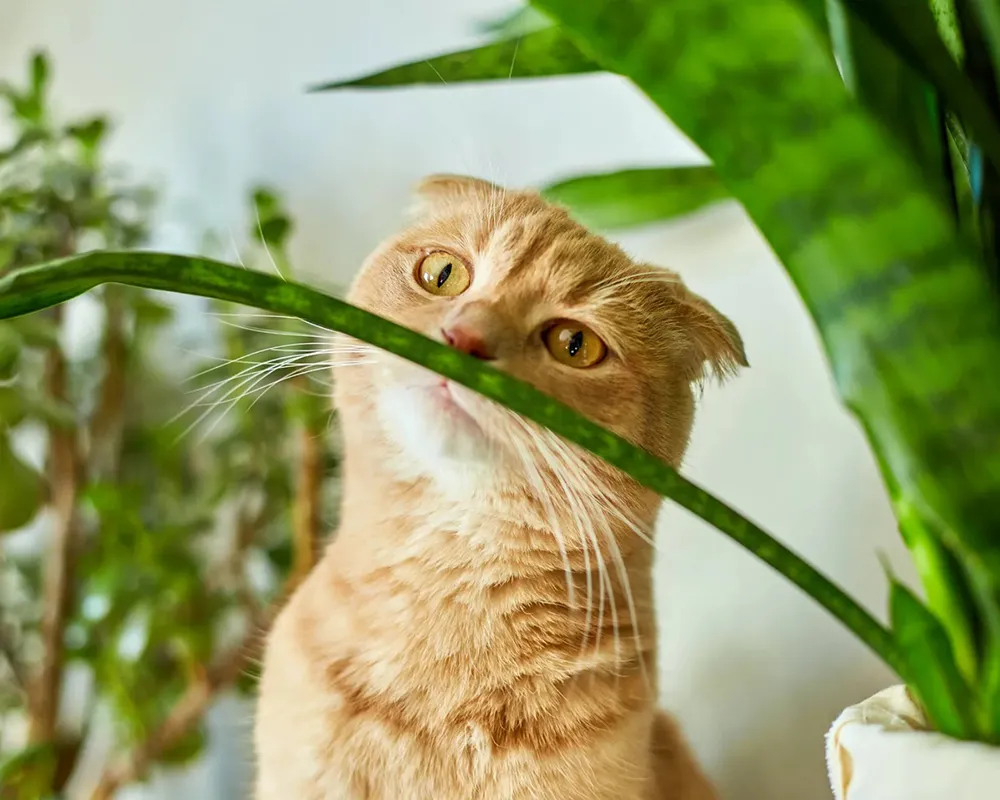
Succulents in biophilic design and commercial spaces
In summary, succulents’ inherent “organized complexity,” diverse forms, and low-maintenance make them excellent choices for commercial spaces. Plant Solutions leverages the power of succulents in various ways, from striking interior plant displays that purify air and calm spaces, to robust patioscaping across Mesa and Gilbert. Our understanding of Arizona’s unique climate allows us to create succulent designs that thrive, so reach out! Together, we can design plant walls and container displays that harmonize with your overall vision!
Your Partner in Biophilic Design
Elevate your projects with unique succulent displays. Plant Solutions is your expert local partner for sourcing and installing the perfect arrangements to match your creative vision.

